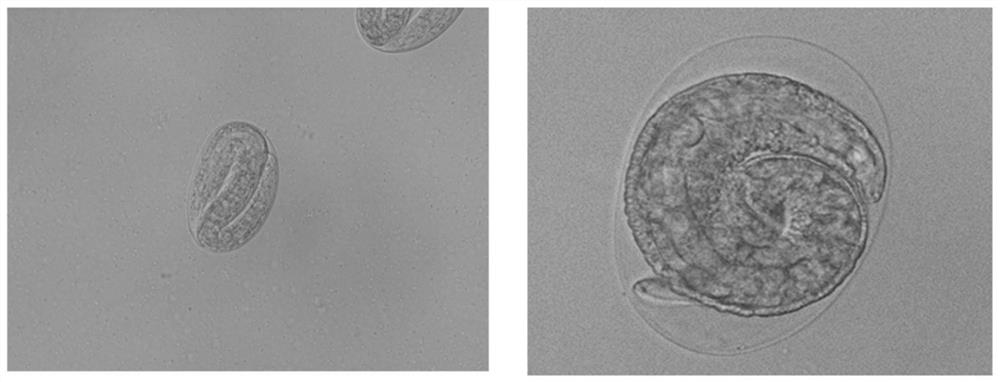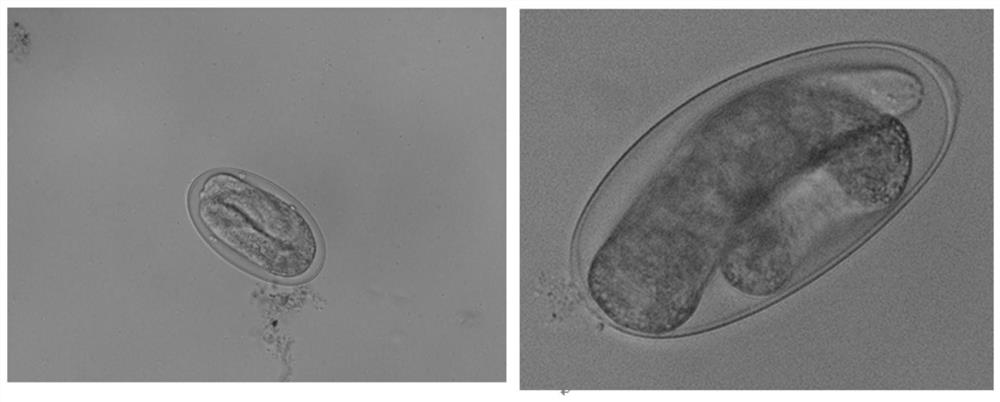Identification method and application of eggs of Haemonchus contortus
A technology of haemonchus contortus and eggs, which is applied in the field of identification of haemonchus contortus eggs, can solve the problems of distinguishing eggs, not finding eggs, distinguishing, etc., achieving low cost and easy operation Simplicity, the effect of alleviating detection difficulties
- Summary
- Abstract
- Description
- Claims
- Application Information
AI Technical Summary
Problems solved by technology
Method used
Image
Examples
Embodiment 1
[0133] The present embodiment provides a method for identifying the eggs of Haemonchus contortus, comprising the steps of:
[0134] 1. Collecting nematode eggs: collecting eggs by sedimentation method includes the following steps. Collect fresh fecal samples from cattle and sheep rectally. After crushing, wash and filter with an 80-mesh filter, discard the feces, and then filter the filtrate with a filter for 2~ 3 times, stand still for 20-30 minutes, pour off the supernatant; settle with clean water for 20-30 minutes, repeat this way 2-3 times to get eggs;
[0135] 2. Cultivate and observe the number of nematode eggs containing larvae (embryo like tadpole or snake-like) and air chamber eggs: place the eggs in normal saline at about 23°C for 4 days, and examine them under a microscope Under 400 times, observe the number of eggs containing larvae and the number of eggs containing air cells;
[0136] 3. Observe the appearance of nematode eggs (length, width and aspect ratio). ...
PUM
| Property | Measurement | Unit |
|---|---|---|
| length | aaaaa | aaaaa |
| width | aaaaa | aaaaa |
| length | aaaaa | aaaaa |
Abstract
Description
Claims
Application Information
 Login to View More
Login to View More - R&D
- Intellectual Property
- Life Sciences
- Materials
- Tech Scout
- Unparalleled Data Quality
- Higher Quality Content
- 60% Fewer Hallucinations
Browse by: Latest US Patents, China's latest patents, Technical Efficacy Thesaurus, Application Domain, Technology Topic, Popular Technical Reports.
© 2025 PatSnap. All rights reserved.Legal|Privacy policy|Modern Slavery Act Transparency Statement|Sitemap|About US| Contact US: help@patsnap.com



